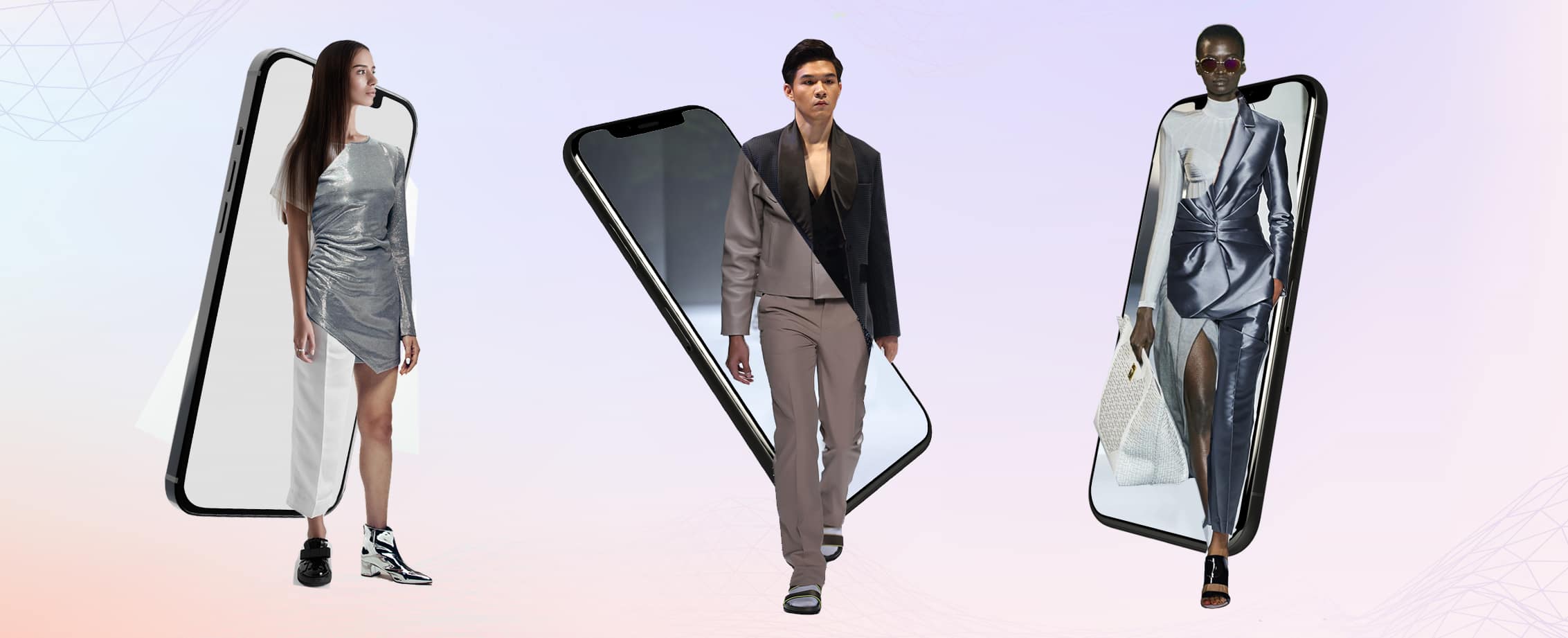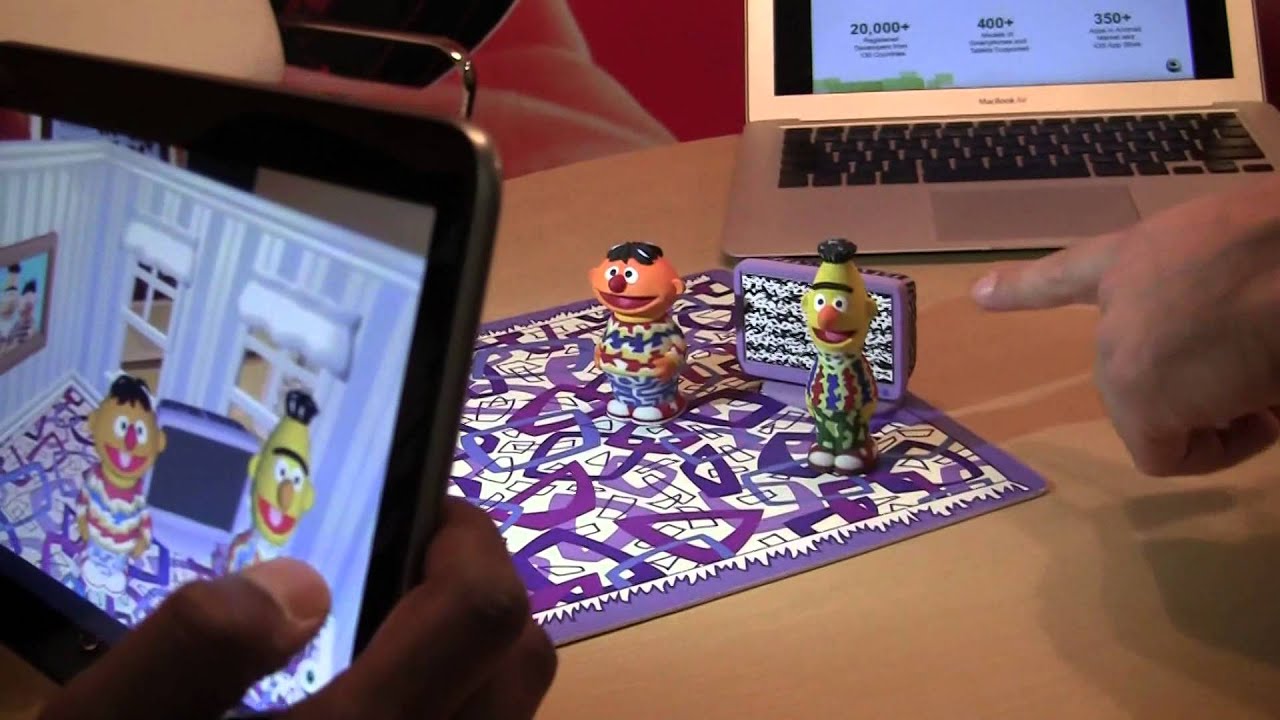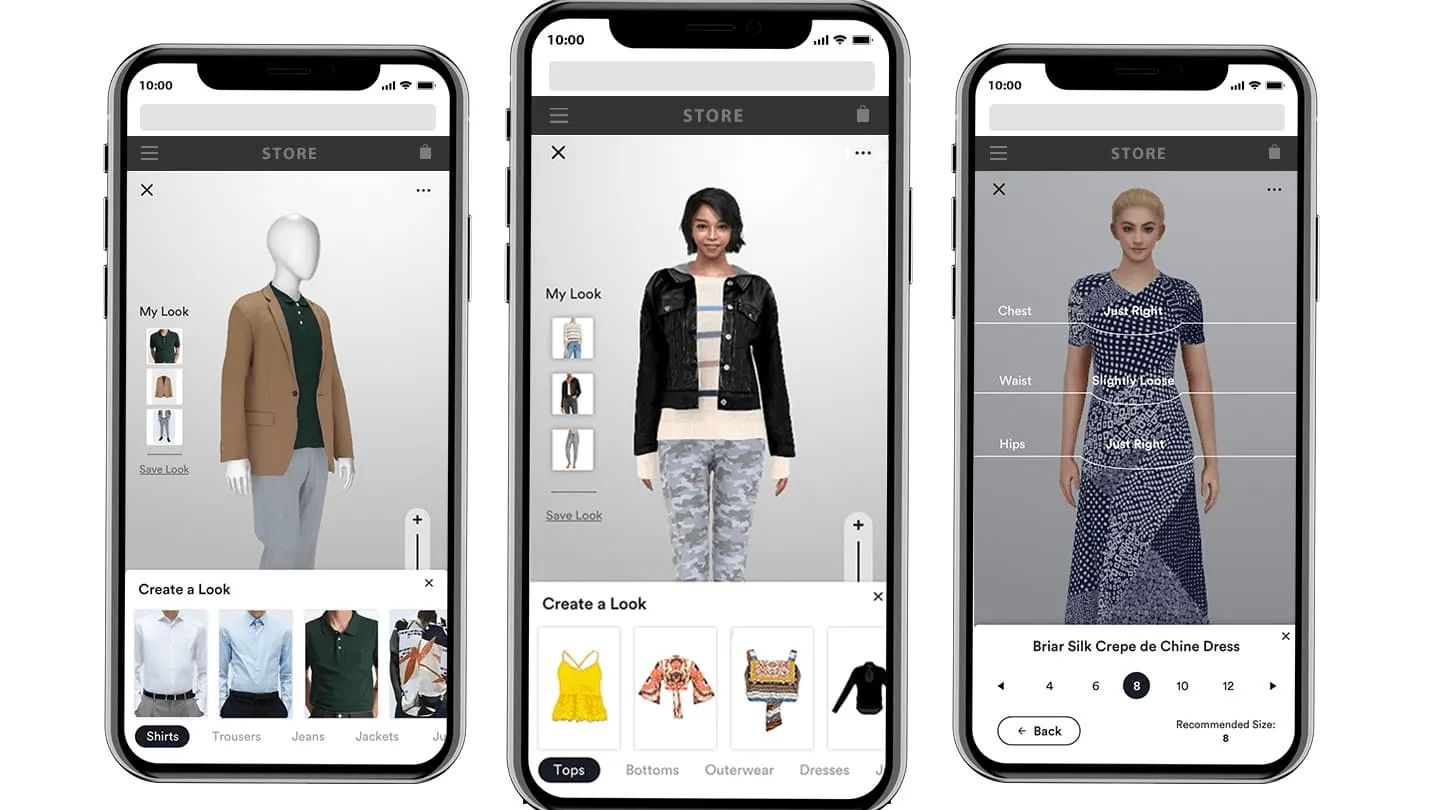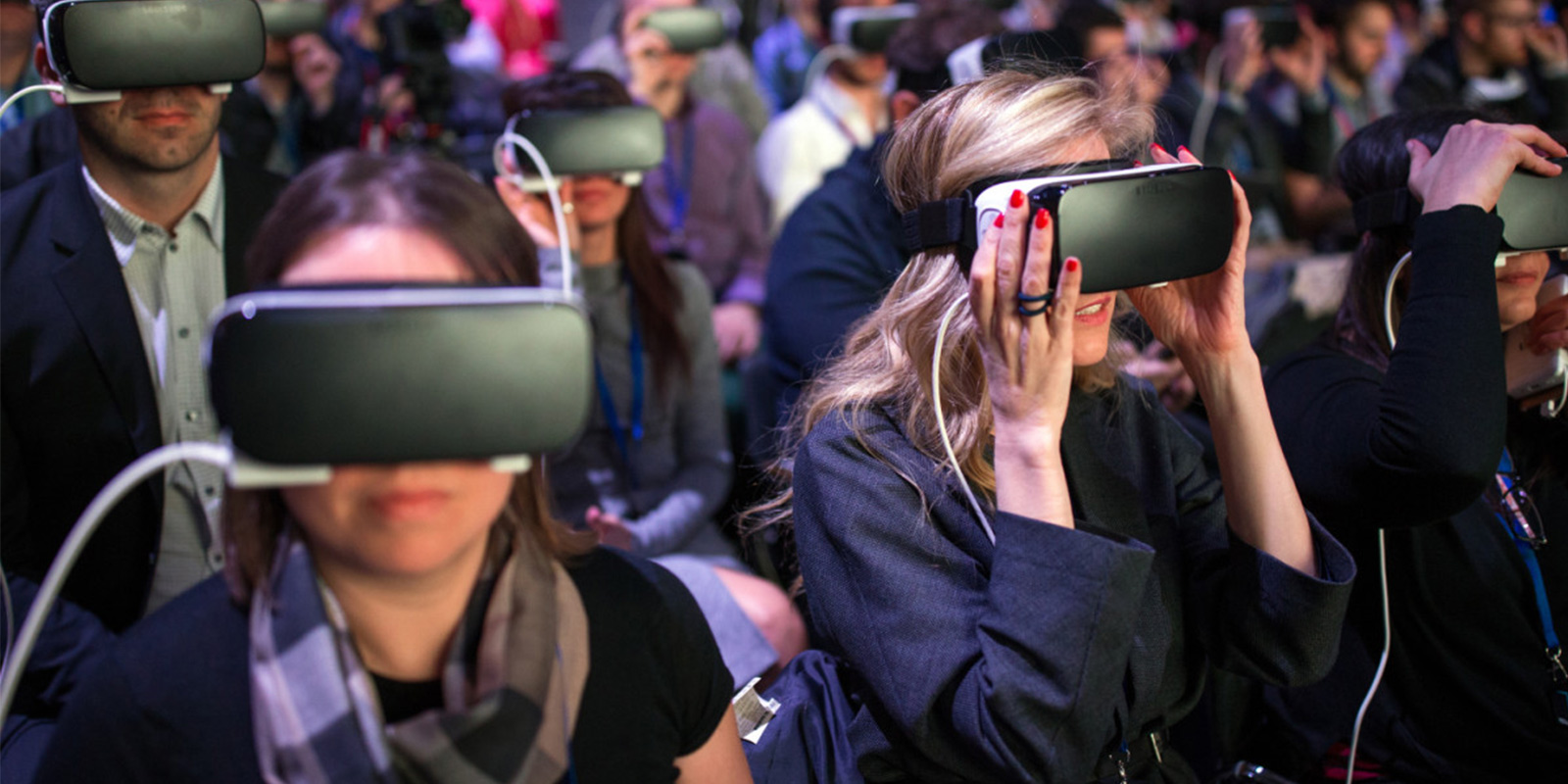Introduction
Welcome to the world of augmented reality clothing! In this article, we will explore the exciting realm where fashion and technology intersect, and learn how to create stunning augmented reality garments. Augmented reality, or AR, has taken the world by storm in recent years, revolutionizing various industries, including fashion. By integrating virtual elements into physical clothing, AR clothing offers a unique and immersive experience for wearers and viewers alike.
Augmented reality clothing allows designers to go beyond traditional textiles and patterns, adding digital layers of interactive graphics, animations, and even sound to garments. Imagine wearing a dress that comes to life with virtual butterflies fluttering around you, or a t-shirt that displays dynamic patterns that change with your movements. With augmented reality, the possibilities are endless.
Not only does AR clothing push the boundaries of creativity and self-expression, but it also offers an innovative way for fashion brands to engage with their audience. AR clothing can be used for marketing campaigns, runway shows, or simply as a means of standing out in a crowded market. By leveraging the power of AR, designers can captivate consumers, create memorable experiences, and make a lasting impact.
In this step-by-step guide, we will walk you through the process of making your own augmented reality clothing. From designing the garment to assembling the final product, we will cover everything you need to know to bring your AR clothing vision to life. So, put on your creative hat, grab your materials, and let’s dive into the exciting world of augmented reality fashion!
Why Use Augmented Reality in Clothing?
The integration of augmented reality technology into clothing opens up a whole new realm of possibilities for the fashion industry. Here are some compelling reasons why designers and brands should explore the use of augmented reality in their clothing:
- Enhanced Visual Experience: Augmented reality adds a layer of interactivity and dynamism to traditional clothing, transforming it into a visual spectacle. With AR, fashion designers can create garments that come alive with animations, graphics, and 3D elements, captivating the audience and leaving a lasting impression.
- Enhanced Brand Storytelling: AR clothing provides an opportunity to tell a unique brand story. Designers can incorporate digital elements that align with their brand image, values, and narrative, adding an extra dimension to their garments. Whether it’s showcasing the inspiration behind a collection or highlighting a brand’s sustainability efforts, augmented reality enables powerful storytelling.
- Increased Customer Engagement: AR clothing offers a highly interactive and immersive experience for customers. When shoppers can engage with virtual elements on garments, it creates a memorable and engaging shopping experience. This increased engagement leads to higher customer satisfaction, loyalty, and a greater likelihood of sharing their experience with others.
- Stand Out from the Competition: In a saturated market, it’s essential for fashion brands to differentiate themselves. Augmented reality clothing provides a unique selling point that sets a brand apart from competitors. By embracing this innovative technology, designers can position their brand as forward-thinking, cutting-edge, and at the forefront of fashion innovation.
- Expanding Design Possibilities: Augmented reality expands the boundaries of traditional fashion design. Designers have the freedom to experiment with virtual elements, such as floating objects, dynamic patterns, and interactive effects, that would be impossible to achieve with physical textiles alone. This opens up a world of creativity and endless design possibilities.
Overall, augmented reality in clothing offers a multitude of benefits for both designers and consumers. From enhancing the visual experience to increasing customer engagement, this technology revolutionizes the way we perceive and interact with fashion. By embracing augmented reality, fashion brands can push the boundaries of creativity, tell captivating stories, and create unforgettable experiences for their audience.
Tools and Software Needed
Creating augmented reality clothing involves a combination of traditional fashion techniques and technology. To bring your AR clothing vision to life, you’ll need the following tools and software:
- Design Software: You’ll need a design software to create the visual elements and graphics for your augmented reality clothing. Popular design software options include Adobe Photoshop, Illustrator, or any other graphic design tools that you are comfortable with.
- AR Development Tools: To integrate the augmented reality features into your clothing, you’ll need AR development tools. Unity and Unreal Engine are two widely-used platforms for AR development that provide a range of features and resources to create interactive AR experiences.
- Smartphone or Tablet: Since augmented reality experiences are viewed through mobile devices, you’ll need a smartphone or tablet to test and showcase your AR clothing. Ensure that your device has the necessary processing power and compatibility with AR apps.
- AR SDKs and Plugins: Software Development Kits (SDKs) and plugins are essential for incorporating AR functionality into your clothing. AR SDKs, such as ARKit for iOS or ARCore for Android, provide the necessary tools and frameworks to detect and track objects in the real world.
- Textile Materials: Alongside the tech tools, don’t forget the traditional fashion materials. Choose the fabrics and materials that best suit your design and consider their compatibility with augmented reality elements. Opt for lightweight and flexible materials that won’t hinder the AR experience.
- Hardware Accessories: Depending on the complexity of your AR clothing, you may require additional hardware accessories. This could include sensors, trackers, or smart components that enable interactivity and enhance the overall AR experience. Research and select the appropriate hardware based on your design requirements.
Remember, the specific tools and software you’ll need may vary depending on your chosen platform, design complexity, and budget. It’s important to research and familiarize yourself with the hardware and software options available to ensure they align with your vision and technical capabilities.
Now that you have an understanding of the tools and software required, you’re ready to dive into the exciting process of designing and creating your augmented reality clothing!
Step 1: Designing Your Augmented Reality Clothing
Designing augmented reality clothing requires a blend of creativity, technical knowledge, and a thorough understanding of how the virtual elements will interact with the physical garment. Follow these steps to bring your AR clothing design to life:
- Concept Development: Start by brainstorming and sketching out your ideas for the augmented reality elements. Consider how they will complement and enhance the overall design of the clothing. Think about the user experience and how the virtual elements will interact with the wearer and their surroundings.
- Choose the Garment: Select the type of clothing that will best showcase your augmented reality design. Whether it’s a t-shirt, dress, jacket, or accessories, choose a garment that provides ample space for the augmented reality elements while still being comfortable to wear.
- Create Mockups: Use design software, such as Adobe Photoshop or Illustrator, to create digital mockups of your augmented reality clothing. This will help visualize how the virtual elements will appear on the garment and allow for any necessary adjustments before moving to the prototyping phase.
- Consider User Interactivity: Think about how users will interact with the augmented reality elements on the clothing. Will they need to scan a QR code, use a dedicated app, or interact with specific gestures or motions? Ensure that the user experience is intuitive and enhances the overall enjoyment of the AR clothing.
- Collaborate with AR Developers: Work closely with AR developers or programmers who specialize in integrating virtual elements into physical objects. Share your design concepts and collaborate to ensure seamless integration of the augmented reality features with the clothing.
- Test and Iterate: Once the initial design is complete, test your augmented reality clothing design on different devices and with various users. Gather feedback and iterate on the design, making any necessary adjustments to enhance the user experience and visual appeal.
Remember, designing augmented reality clothing is an iterative process that requires a balance between fashion design and technology integration. Don’t be afraid to experiment and push the boundaries of creativity to create truly unique and captivating augmented reality garments.
With the design phase complete, you’re ready to move on to the next step: choosing the right fabric and materials for your augmented reality clothing.
Step 2: Choosing the Right Fabric and Materials
The choice of fabric and materials for your augmented reality clothing is crucial to ensure the seamless integration of virtual elements and provide comfort to the wearer. Follow these guidelines to select the appropriate fabric and materials:
- Consider the Augmented Reality Elements: Take into account the type and nature of the augmented reality elements you plan to incorporate. If your design requires transparency or projection of virtual images, opt for lightweight and sheer fabrics such as chiffon or organza. For more interactive elements, consider using fabrics that can withstand additional weight or pressure.
- Compatibility with Electronics: If your augmented reality clothing involves the integration of electronic components, ensure that the chosen fabric can accommodate them. Choose materials that are flexible, breathable, and have sufficient space to house the electronics comfortably without compromising the clothing’s look or functionality.
- Comfort and Wearability: Prioritize the comfort of the wearer. Select fabrics that are soft, breathable, and hypoallergenic. Consider factors such as climate, intended use, and desired level of comfort when choosing the fabric for your augmented reality clothing.
- Durability and Maintenance: Take into account the durability and maintenance requirements of the fabric. Will the fabric hold up well to frequent wear? Will it be suitable for cleaning, whether by hand or machine? Consider these aspects to ensure the longevity of your augmented reality clothing.
- Ability to Blend with Virtual Elements: Aim for a fabric that complements and enhances the appearance of the augmented reality elements. Consider the color, texture, and opacity of the fabric to ensure the virtual elements appear seamlessly integrated with the physical garment.
- Experiment and Test: Before finalizing your fabric choice, conduct experiments and tests. Try different fabrics and materials to see how they interact with the augmented reality elements. Assess how they affect the overall aesthetics, functionality, and user experience. This experimentation will help you make an informed decision.
Remember, the choice of fabric and materials plays a significant role in the success of your augmented reality clothing. It is essential to find the right balance between practicality, aesthetics, and the integration of virtual elements. By carefully selecting appropriate fabric and materials, your augmented reality clothing will not only look visually appealing but also provide a comfortable and enjoyable experience for the wearer.
With the fabric and materials chosen, it’s time to move on to the next step: creating the AR elements for your augmented reality clothing.
Step 3: Creating the AR Elements
Creating the augmented reality (AR) elements for your clothing is where the magic happens. These virtual elements will bring your designs to life and enhance the interactive experience. Follow these steps to create the AR elements for your augmented reality clothing:
- Define the AR Experience: Determine what type of AR elements you want to incorporate into your clothing. This could include animations, 3D models, interactive buttons, or even sound. Consider how these elements will enhance the overall design and user experience.
- Work with AR Design Software: Utilize design software, such as Unity or Unreal Engine, to bring your AR elements to life. These platforms offer a range of tools and resources to create and manipulate virtual objects. Familiarize yourself with the software and explore its capabilities to create stunning AR effects.
- Create and Animate AR Objects: Use 3D modeling software, such as Blender or Maya, to design and animate the virtual objects that will be integrated into your clothing. Pay attention to details such as textures, lighting, and realistic movements to enhance the visual appeal of the AR elements.
- Consider Tracking and Interaction: Determine how the AR elements will interact with the clothing and the wearer. This may involve implementing object tracking, where the AR elements respond to the movement of the garment or the wearer’s actions, or incorporating gesture recognition for user interaction. Ensure that the tracking and interaction mechanisms align with the design concept of your augmented reality clothing.
- Optimize for Performance: As you create the AR elements, consider the performance requirements and limitations of the devices that will run your AR application. Optimize the elements for smooth playback and minimal processing power, so the experience remains seamless and enjoyable for the users.
- Test and Refine: Test the AR elements in conjunction with the clothing prototype to ensure they integrate seamlessly. Conduct user testing to gather feedback and refine the design. Pay attention to factors such as visibility, responsiveness, and user-friendliness, and make adjustments to improve the overall AR experience.
By following these steps, you can create dynamic and captivating AR elements for your augmented reality clothing. Remember to balance aesthetics with functionality, ensuring that the virtual elements enhance the overall design and deliver an engaging user experience.
With the AR elements successfully created, we can now move on to the next step: assembling the augmented reality clothing.
Step 4: Assembling the Clothing
After designing the augmented reality elements and selecting the appropriate fabric, it’s time to bring everything together by assembling your augmented reality clothing. Follow these steps to ensure a seamless integration:
- Prepare the Fabric: Cut the fabric according to your chosen pattern, ensuring that it aligns with your design and allows sufficient space for the augmented reality elements. Take care to follow any specific assembly instructions or sewing techniques required for your chosen fabric.
- Integrate AR Components: Depending on your design, carefully integrate the augmented reality components into the fabric. This may involve attaching sensors, trackers, or electronic modules to the appropriate areas of the clothing. Follow the guidelines provided by the AR development team to ensure proper alignment and functionality.
- Connect AR Elements: Connect the AR elements, such as electronic components or sensors, to the necessary power sources or control units. Ensure that all connections are secure and well-insulated to avoid any risks or malfunctions.
- Sew or Attach Virtual Elements: Incorporate the visual augmented reality elements onto the fabric. This may involve sewing 3D objects, attaching printed graphics, or applying materials that enhance the AR experience. Pay attention to detail and alignment to create a visually cohesive and well-integrated augmented reality garment.
- Test Functionality: Before finalizing the assembly, test the functionality of the augmented reality components. Ensure that the sensors, trackers, or other interactive elements respond accurately to the intended user interactions and movements. Make any necessary adjustments or repairs to optimize the functionality.
- Add Finishing Touches: Complete the assembly by adding any finishing touches, such as buttons, zippers, or embellishments, to enhance the aesthetics and functionality of the augmented reality clothing.
Throughout the assembly process, it’s important to maintain attention to detail and accuracy. Take your time ensuring that the augmented reality elements are seamlessly integrated with the fabric, and that the garment fits and functions correctly.
With the augmented reality elements successfully assembled into the clothing, it’s time for the final step: testing and adjusting to ensure a flawless AR experience.
Step 5: Testing and Adjusting
Testing and adjusting your augmented reality clothing is a crucial step to ensure that the AR elements function seamlessly and provide an optimal user experience. Follow these steps to thoroughly test and refine your augmented reality clothing:
- Functional Testing: Test the functionality of the augmented reality components. Ensure that the virtual elements appear as intended and respond accurately to user interactions or movements. Check for any glitches, delays, or inaccuracies that may impact the AR experience.
- User Experience Testing: Invite users to test and provide feedback on the augmented reality clothing. Observe how they interact with the AR elements and listen to their feedback. Pay attention to their comfort, ease of use, and overall satisfaction with the AR experience.
- Fit and Comfort: Evaluate the fit and comfort of the augmented reality clothing. Assess how the fabric and AR components interact and verify that the garment remains comfortable and wearable. Make any necessary adjustments to improve the fit and overall feel of the AR clothing.
- Usability and Accessibility: Consider the usability and accessibility aspects of the augmented reality clothing. Ensure that users can easily access and understand how to engage with the AR elements. Test the clothing with different users to ensure it is inclusive and accessible to a diverse audience.
- Visual Appeal: Evaluate the visual appeal of the augmented reality clothing. Assess how well the physical and virtual elements blend together, and ensure the overall aesthetic remains pleasing. Make any necessary adjustments to enhance the visual impact of the AR elements.
- Iterate and Refine: Based on the feedback and results from testing, make iterative improvements to your augmented reality clothing. Address any issues, fix any bugs or malfunctions, and refine the design to create a seamless and enjoyable AR experience.
Testing and adjusting are continuous processes, so don’t hesitate to go through multiple iterations to achieve the desired outcome. Listen to feedback, make the necessary adjustments, and strive for constant improvement to deliver an exceptional augmented reality clothing experience for your users.
Once you are satisfied with the testing and adjustments, your augmented reality clothing is ready to be showcased and enjoyed by others. Congratulations on creating a unique and innovative blend of fashion and technology!
Conclusion
Augmented reality clothing offers an exciting fusion of fashion and technology, enabling designers to create captivating and immersive experiences for wearers and viewers alike. By integrating virtual elements into physical garments, augmented reality clothing pushes the boundaries of traditional fashion design and opens up a world of endless creativity.
Throughout this step-by-step guide, we explored the process of making your own augmented reality clothing. From designing the AR elements to selecting the right fabric, assembling the clothing, and testing and adjusting, each step plays a crucial role in bringing your vision to life.
Augmented reality clothing presents numerous benefits for fashion designers and brands. It enhances the visual experience, offers a unique storytelling medium, increases customer engagement, and enables brands to stand out in a competitive market. AR clothing also expands the possibilities for design, allowing for the incorporation of digital elements that enhance the aesthetics and user interaction.
As with any innovative endeavor, creating augmented reality clothing requires a combination of creativity, technical expertise, and collaboration with AR developers. It’s important to embrace experimentation, iterate on designs, and listen to user feedback to deliver the best possible AR experience.
By following the steps outlined in this guide and leveraging the right tools and software, you can create stunning augmented reality garments that captivate, engage, and leave a lasting impact on your audience.
Embrace the fusion of technology and fashion, and let your imagination soar as you embark on the exciting journey of creating your own augmented reality clothing!

























